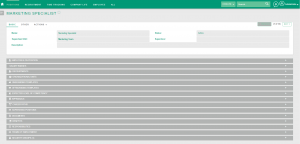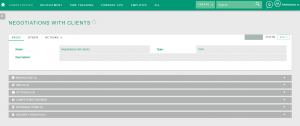Difference between revisions of "Process:Job Description"
| Line 5: | Line 5: | ||
|Related Modules=Module:Positions,Module:Competencies,Module:Benefits,Module:Responsibilities,Module:EmployeeRoles,Module:OrganizationalUnits | |Related Modules=Module:Positions,Module:Competencies,Module:Benefits,Module:Responsibilities,Module:EmployeeRoles,Module:OrganizationalUnits | ||
|Process Models=File:MintHCM Job Description Diagram.png | |Process Models=File:MintHCM Job Description Diagram.png | ||
| − | |Short Description= | + | |Short Description=The description of functionalities associated with workplace |
}} | }} | ||
=={{int:ev-description}}== | =={{int:ev-description}}== | ||
Revision as of 16:03, 19 March 2020
| Job Description |
|---|
Contents
[hide]Short Description
The description of functionalities associated with workplace
Description
The functional areas named Job description helps manage human resources by adding clear, understandable explanations of everyone’s responsibilities, as well as the information about their place in the organization.
This features holds data regarding supervisions, benefits, duties, roles and career paths.
This functional area is formed by modules:
Positions
The module Positions collects all information about work stations created in the company, important for the HR department as well as the employee employed in this position.
The module is associated with such tools and mechanisms useful for the HR department as onboarding templates used in the recruitment process, information about recruitments carried out for a given position, as well as offboarding templates useful when an employee leaves. The data associated with the candidate entered into the system during its transformation into an employee are moved to the employee record.
It contains a list of employees employed in this position, as well as information about where the position belongs to the organizational structure of the company.
The module also collects information important for the employee, such as responsibilities, expected level of competency, appraisals, supervised positions, benefits and career paths.
Competencies
The Competencies include attributes such as: knowledge, skills and attitiudes.
Knowledge is all information required in a given area that an employee has in a given position and whose scope is assessed.
Skills determine the ability to apply knowledge in practice.
Attitudes determine the employee's attitude and motivation to perform their duties. These features and requirements for the employee are mapped in the system.
Benefits
The Benefits are additional employer's benefit for an employee.
Responsibilities
The Responsibilities consist of groups of activities.
Roles
In addition to the duties required for the position, the employee may have additional obligations arising from other functions that employee may perform. These obligations arise from the role to which the employee is assigned. A role is not a position, but if necessary, it can be transformed into a position.
Organisational Junits
This subanel in module Positions shows to which organizational unit the position belongs.




